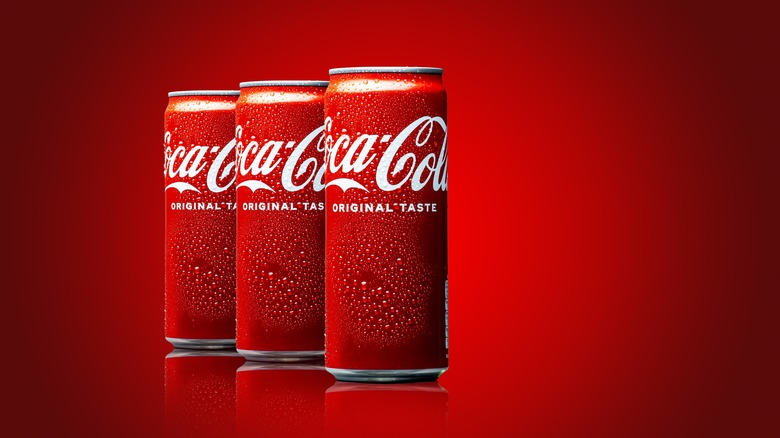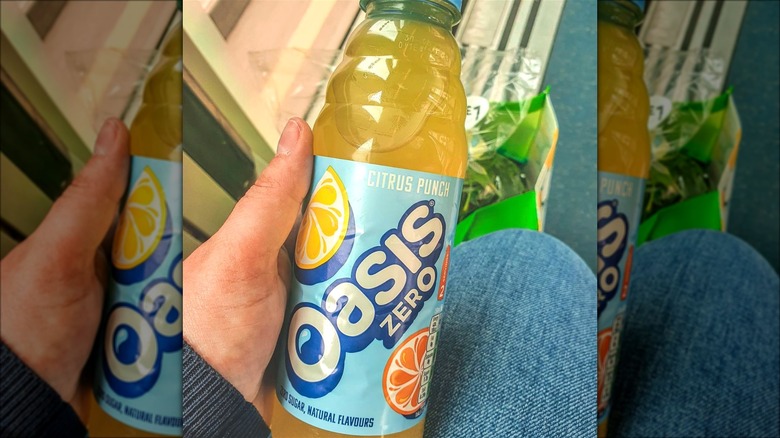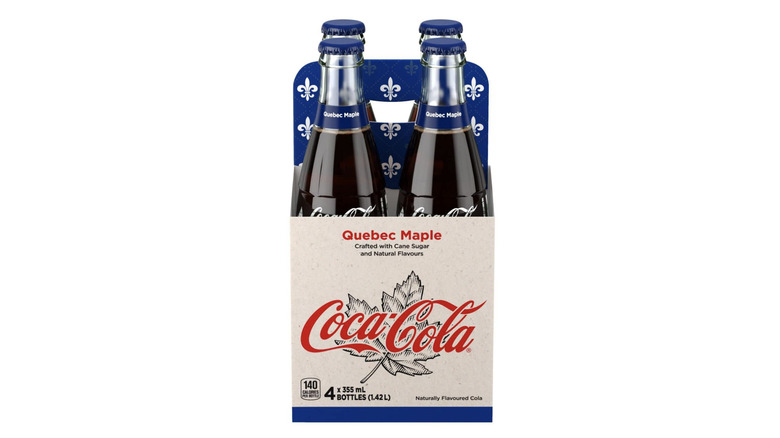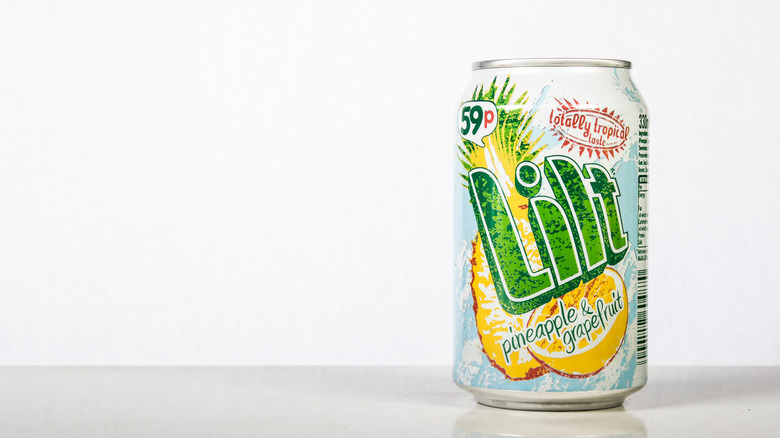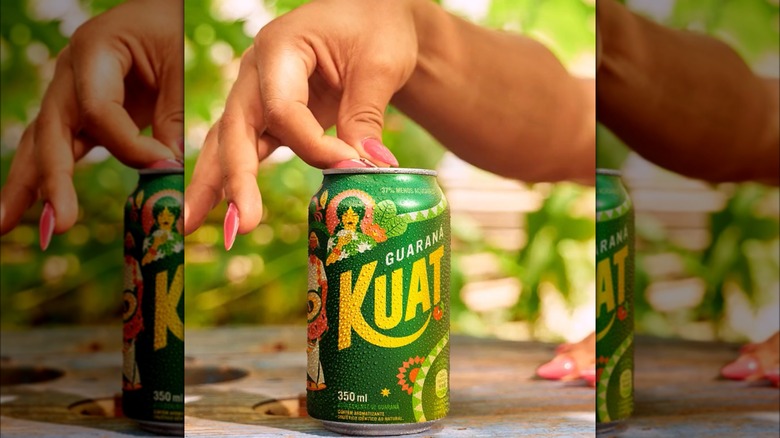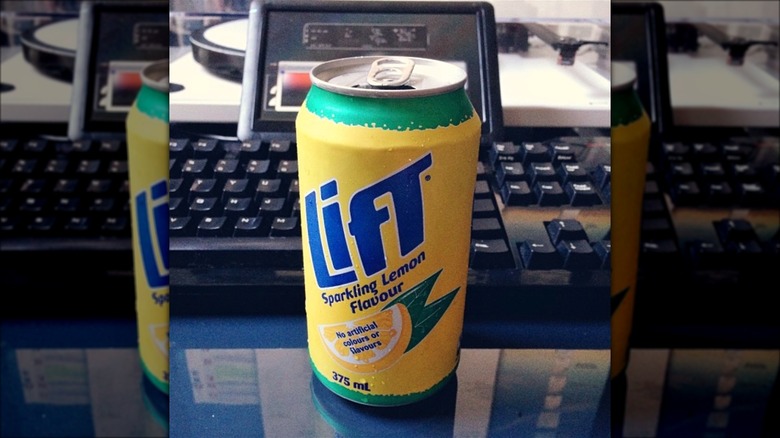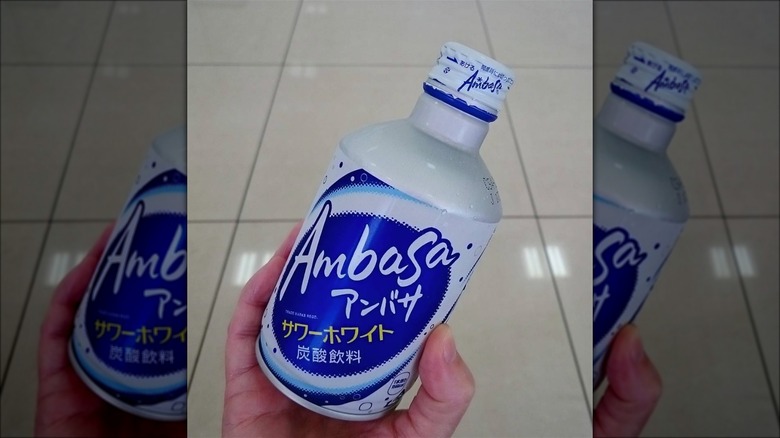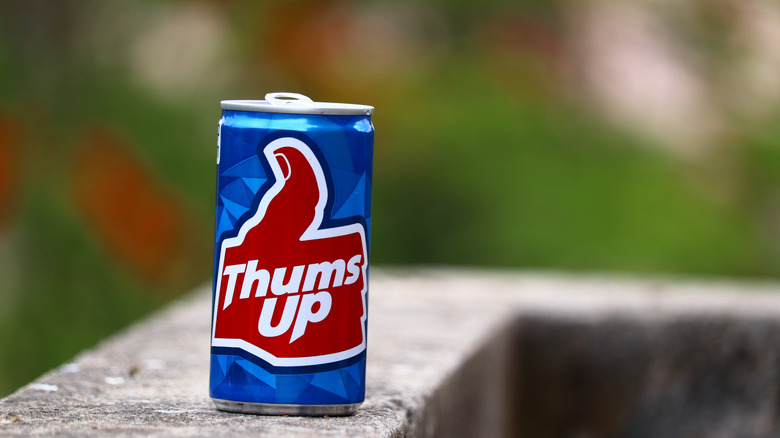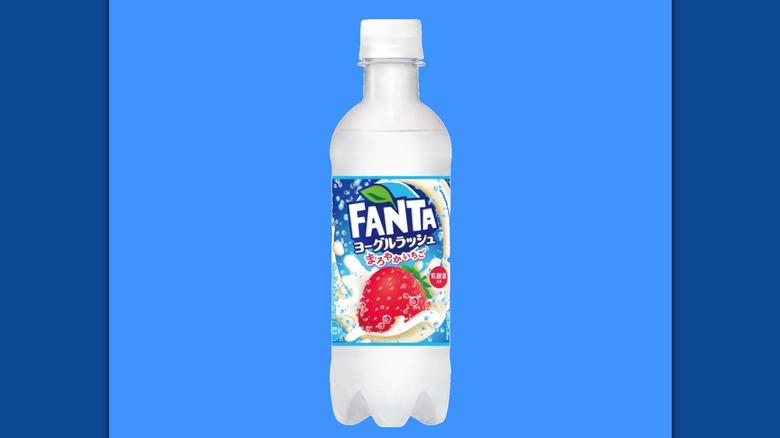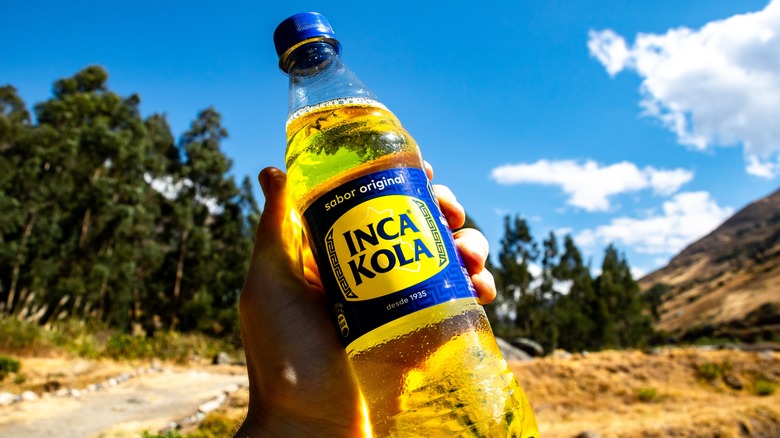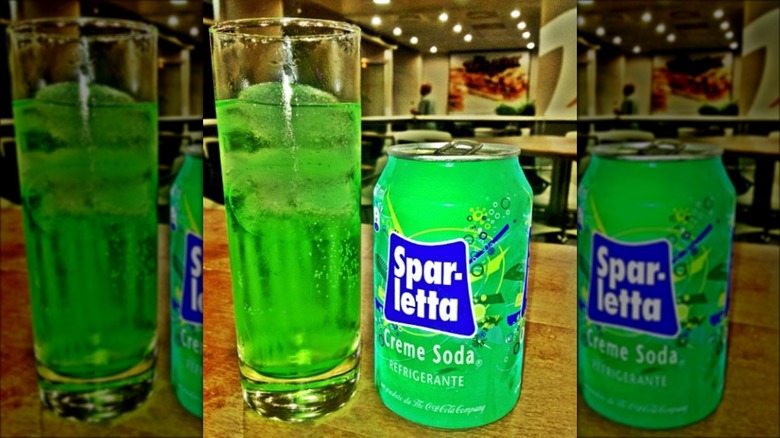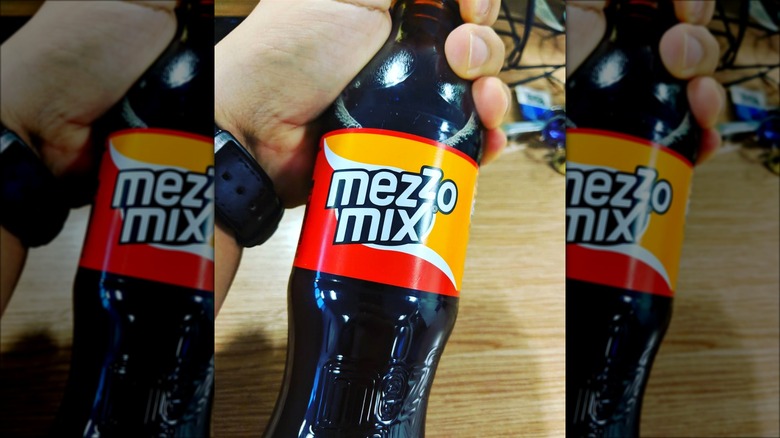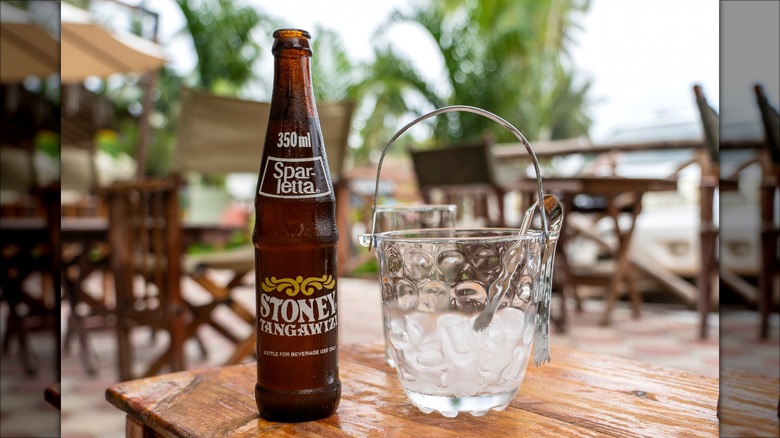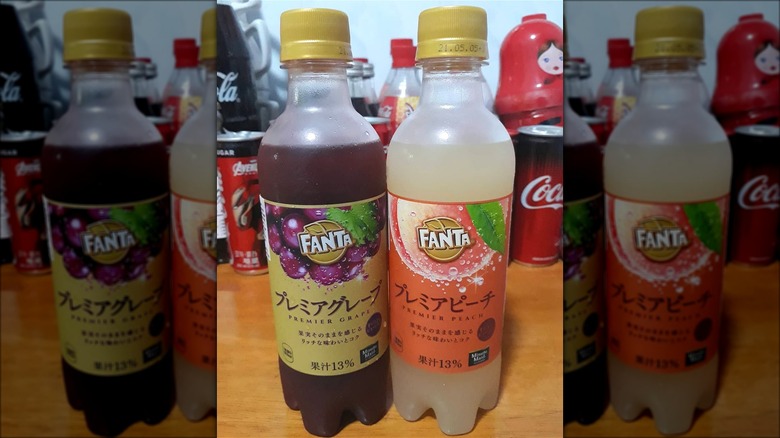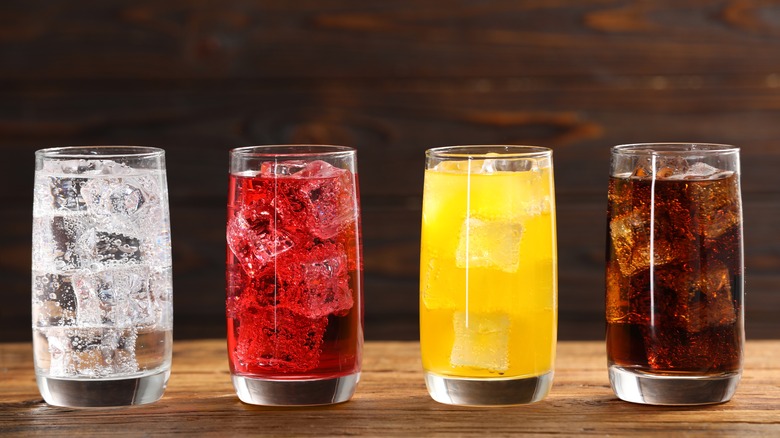International Coca-Cola Soft Drinks Ranked Worst To Best, According To Customers
Coca-Cola is a dominant force in the international beverage industry. It was the 28th largest company in the world by market capitalization in 2023, which is saying a lot considering it's competing with juggernauts like Apple, Saudi Aramco, and Johnson & Johnson. Not surprisingly, it is, by far, the largest soft drinks company globally, with a brand value of $98 billion in 2023 compared to $19 billion for Pepsi and $18 billion for Red Bull.
The name of the company immediately conjures images of its familiar red and white packaging and the dark, sugary drink inside, but its product range is far more varied than its signature beverage. Founded in 1892 by an Atlanta chemist, Coca-Cola now sells 3,500 types of beverages under 500 different brands in 200 countries and territories around the world and has an annual revenue of $45 billion. But wander into your local convenience store and you're unlikely to find the majority of these products. You'll see Coke, Sprite, and Fanta, but you won't see Sparletta, Oasis, or Thums Up. Coca-Cola has thrived over the years by purchasing and repackaging existing brands that have a passionate following in their respective regions. In doing so, it has successfully become the dominant soft drinks company in the world. Keep reading to discover which international Coca-Cola beverages Americans are missing out on, and which we're better off without.
13. Oasis
There are some wildly popular regionally-specific soft drinks that simply don't translate to other parts of the world. Oasis is one such example. Created in France but very popular in the U.K., it is an intensely flavored juice drink. It comes in two main flavors — Citrus Punch and Summer Fruits — with corresponding no-sugar versions. Other flavors include Exotic Fruit, Blackcurrant Apple, and Chilled Cherry, while seasonal flavors appear and disappear frequently.
Perhaps the main issue with Oasis is that it does not have carbonation to temper its sickly sweetness, or maybe it's that it leaves behind an astringent sensation from all its artificial flavorings. Whatever the reason, this range of drinks is barely palatable. Each 100-milliliter serving contains only four grams of sugar, which might lead some to assume it is not cloyingly sweet, but instead of sugar or corn syrup, the sweetness is derived from aspartame and acesulfame K, both of which provide a metallic, artificial edge. While many soft drink fans might pine for certain international Coca-Cola brands to be brought to the U.S., we're not missing anything with Oasis.
12. Coca-Cola Quebec Maple Syrup
It is almost a foregone conclusion that all food and beverage brands with a presence in Canada will, at some point, release a maple-flavored version of their product, and Coca-Cola is no exception. The Quebec Maple flavor of its classic Coke is made "using maple syrup from La Belle Province," though its ingredients list only carbonated water, cane sugar, caramel color, phosphoric acid, natural flavor, and caffeine. Presumably the "natural flavor" is where the maple syrup comes in, but as the second-to-last item on the list, it barely contributes to the overall flavor.
Not surprisingly, reviews of the drink are mixed. Maple is an appealing flavor, but Canadians are experts and many have pointed out that the product is not up to their standards. Even outsiders have complained that the maple flavor isn't particularly strong. Some have compared it negatively to Bec Cola, an artisanal brand that is beloved by Canadians and features maple syrup as its second ingredient. Maple Coca-Cola was an inevitability in Canada, but that doesn't mean it's a necessary purchase.
11. Pineapple Grapefruit Fanta (formerly Lilt)
Pineapple Grapefruit Fanta is the second generation of the beloved but troubled U.K. soft drink known as Lilt. The "totally tropical" carbonated beverage was the color of lemonade and featured a pineapple and grapefruit flavor. It committed hard to its marketing scheme, which featured stereotypical representations of Black Caribbean culture, like reggae and rustic island life, all to sell a British-born soda. Its branding has not aged well, and finally, after nearly 50 years of cultural appropriation, Coca-Cola gave up the ruse and rebranded the drink as Pineapple and Grapefruit Fanta.
The change was met with rage and heartbreak from fans who had grown up with the Lilt brand, but Coca-Cola pointed out that the recipe was exactly the same, and customers eventually agreed. What the outrage masked was the fact that Lilt had been trailing far behind Fanta for a decade, and the decision to merge the two probably had just as much to do with finances than with culturally insensitive marketing. It's a drink that appeals to nostalgia but has little to offer otherwise. The pineapple and grapefruit flavor is pleasant but not revelatory, and as a member of the Fanta family, it doesn't stand out.
10. Kuat
In Brazil, soft drinks are a booming business. The market is expected to hit $13 billion in 2024, 44% of which is controlled by Coca-Cola. Of all the country's soft drinks, the one that will never fail to catch your eye is Guaraná Antarctica, though it accounts for only 7% of the country's soft drink market. Guarana is a popular ingredient in Brazil that is grown in the Amazon. It provides the caffeine in many energy drinks and has a tart, slightly bitter flavor. The green Guaraná Antarctica cans featuring the red berries of the Amazonian plant can be found all over Brazil, but it is not the only product to feature the famous ingredient. Coca-Cola's Kuat soda is also flavored with guaraná and was so popular in the early 2000s that the company tried to expand its market to the U.S. Today, however, it only accounts for 3% of Brazilian soft drink sales, less than half of Guaraná Antarctica.
There are so many Brazilian soft drinks made with guaraná that Kuat is easily lost in the shuffle. Compared to the overpoweringly sweet Antarctica, it is less sugary and has a slightly stronger flavor of guaraná. This might be ideal for those who find Antarctica too sweet, but if you visit the country, you're more likely to come across Antarctica, and according to most customers, that's exactly how it should be.
9. Lift
Most regionally-specific beverages are sold in neighboring countries, but the soft drink Lift found its largest markets in Mexico, Australia, and New Zealand. In Mexico, Manzana Lift is all the rage, a sweet and sour beverage that tastes just like green apple-flavored candy. In Australia, lemon was the flavor of choice before Coca-Cola pulled it from grocery store shelves and replaced it with Sprite Lemon+. In New Zealand, however, lemon-flavored Lift is still alive and kicking despite fears that it, too, might be phased out.
It wouldn't be particularly shocking if Coca-Cola did decide to axe Lift from New Zealand, because, as a lemon-flavored fizzy drink, it is similar to Sprite, no matter what its fans say. What it does have in its favor is real lemon juice. In fact, lemon juice concentrate makes up 5% of the entire beverage, giving it a more natural citrus flavor. But while lemon Lift may be more tasty and lemony than Sprite, it does not hold a candle to the apple version.
8. Ambasa
It's hard to imagine a milk-based fizzy soft drink thriving in the U.S., but throughout Asia, it's a hit. Legend has it that these drinks are modern recreations of a fermented milk beverage favored by Mongolians in the early 20th century. Ambasa is Coca-Cola's version of the product. Made with milk, it has a sweet and tangy yogurt flavor and is best-served ice cold.
It is often and inevitably compared to Milkis, a dairy-based soft drink from South Korea, and Calpico, another version of the drink from Japan. All three brands are popular, but despite Coca-Cola's dominance around the world, Ambasa is not quite as beloved as its main rivals. Calpico has the advantage of being more than a century old compared to Ambasa's scant four decades, while Milkis has a range of fruity flavors and is notable for its luxuriously creamy texture. Ambasa may be a delicious novelty for those who are unfamiliar with milk-based carbonated beverages, but there are better options available. If you find yourself in Korea or Japan, you're better off prioritizing Melon Milkis or Lychee Calpico.
7. Thums Up
The triumphant story of Indian soft drink Thums Up casts Coca-Cola as both the villain and the victor. The carbonated beverage was introduced to the Indian market in 1977 to fill the gap left by Coca-Cola and PepsiCo, who abandoned operations in the country when the government imposed strict rules on international companies. By the '90s, the government eased its restrictions, and PepsiCo and Coca-Cola returned to discover that Thums Up had become the dominant carbonated drink in their absence. With its Pepsi-adjacent spiciness and macho "Taste the Thunder" branding, it was a force to be reckoned with, and Coca-Cola decided to buy it rather than compete with it. Rumor has it that the company removed Thums Up from circulation shortly thereafter, hoping to create a gap in the market for Coke. Eventually, however, it was forced to concede that the Indian-born beverage was its best hope at beating Pepsi. These days, Thums Up has the second highest market share of carbonated beverages in India, second only to Sprite. Coca-Cola and Pepsi fall in distant fifth and sixth slots, respectively. In 2022, it became a billion-dollar brand.
So, is Thums Up worth the hype? For historical reasons alone, it deserves recognition. As far as flavor goes, however, the results are mixed. If you're used to drinking Pepsi, you'll probably find that it is very similar to the point of redundancy. Fizzy, sweet, and pleasantly spicy, it's perfect for a hot summer's day, just like Pepsi.
6. Fanta Yogurt Rush
There are so many geographically specific Fanta flavors that a person could spend their whole life traveling the world to taste them all. One of the most unique, however, is Fanta Yogurt Rush, a product range found in Japan. It's a riff on the popular milky soda formula using the classic Fanta flavor, and there is a range of flavors to try, including strawberry, peach, and white grape. Its ingredients include fermented milk (yogurt) and skim milk powder, ensuring that the dairy flavor is powerful but not artificial. It also uses real fruit juice.
Compared to other carbonated milk beverages, the fruit flavors in Fanta Yogurt Rush are mild while the yogurt is powerful. For some people, especially those who might be hesitant to try a dairy-based soft drink, this balance might be all wrong. However, if you want to dive headfirst into the category, it's a good place to start.
5. Inca Kola
In Peru, Inca Kola is the soft drink of choice, immediately recognizable by its bright yellow color and blue and yellow label. According to 2019 data, it was by far the most popular beverage brand in the country ahead of Nescafé and Coca-Cola (per Statista) and was the second-most purchased beverage in all of Latin America behind Coca-Cola. It even beat Pepsi. What makes Inca Kola so special? Aside from its color, it has a deliciously unique flavor of lemon verbena and, according to many customers, bubblegum. As its name suggests, lemon verbena has a strong lemony flavor, though it looks more like grass than a citrus fruit. In soda, it adds a refreshingly fragrant, almost floral flavor that is rare among soft drinks, though the added sugar provides a familiar syrupy sweetness.
Inca Kola was created in 1935 and has a secret formula of various fruits that you'll only see labeled as "natural and artificial flavors" on the can. If you're a fan of intensely sweet soft drinks, lemon, and bubblegum, you'll probably love this drink, though some may be put off by the intense sugariness. Even if you don't love it, the soda is an integral part of Peruvian culture and a mandatory purchase if you're visiting.
4. Sparletta
If you happen to be shopping for a soft drink in South Africa, Namibia, Uganda, or Malawi, you'll discover that the Sparletta brand has an outsized presence. Around Africa, more than a dozen countries carry Sparletta products, which flavors such as Creme Soda, Apple Rush, and Pine Nut. Depending on which country you're in, you might be able to get your hands on Cherry Plum and Apple and Blackcurrant as well. Each has its own bright color, with neon lime green for Creme Soda and bright red for Sparberry.
The brand has been around since the 1950s and has a strong foothold throughout the continent, and it's easy to see why. Each flavor is completely different from the standard Coca-Cola flavors found in the U.S. Pine Nut, for example, has a coconut and pineapple flavor that still manages to taste distinct from an alcohol-free piña colada, while the Creme Soda flavor is fruitier and tangier than the standard vanilla taste of other cream sodas. Some customers have complained in recent years that the flavor of the Creme Soda suffered when the brand lowered its sugar content, but it remains a beloved and familiar drink that still wins points for uniqueness.
3. Mezzo Mix
Mezzo Mix is a stalwart of convenience stores in Germany, Switzerland, Austria, and Finland. The orange-flavored cola has been around since the 1970s, making it a nostalgic beverage that continues to thrive even as the soft drink market diversifies. Its motto "cola küsst orange" translates to cola kisses orange, which summarizes the flavor pretty succinctly. There are no intricate ingredient combinations or daring flavors. It's just a mixture of cola and orange, and it works. This combination is a favorite in German-speaking countries. "Spezi," as it is colloquially known, is not exclusive to Coca-Cola. PepsiCo has its own delightfully named version, Schwip Schwap, and Mezzo Mix is merely one of many options on the market, albeit one of the most popular.
While some customers claim the drink is basically just Coke mixed with Fanta, passionate fans know that there is really no comparison. Mezzo Mix has a secret formula that Coca-Cola is not giving away, and no matter how many ratios of Fanta to Coke you try, you will not produce the same sugary, citrusy flavor. For one thing, it uses real sugar and the orange flavor comes from orange juice concentrate. Unless you scrounge up a Mexican Coke made with sugar rather than the corn-syrupy American version and procure orange juice concentrate, you're unlikely to produce a drink that tastes even remotely like the real deal.
2. Stoney Ginger Beer
Whether you call them ginger ale or ginger beer, ginger-flavored carbonated beverages are a dime a dozen. And yet, Africa's Stoney Ginger Beer has distinguished itself for decades as one of the most beloved and recognizable options of them all. Known for its intensely fiery flavor that burns the back of your throat on the way down, it is not joking around when it comes to its ginger content. You might even cough on the burning mist that rises from a freshly opened can. You can even purchase an "extra kwetsa" version that boasts a stronger kick.
Stoney Ginger Beer is made in South Africa and sold in several countries throughout the continent, including in Swahili-speaking regions where it's sold in brown bottles as Stoney Tangawizi under the Sparletta brand. Its black and brown labels featuring white lettering indicate that the drink is not for the faint of heart, and some might find its strong flavor to be an acquired taste. However, once you develop a preference for it, all other ginger-flavored sodas will taste pitifully weak in comparison. It might even ruin the category for you altogether.
1. Fanta Premier
It's no secret that Japan has some of the best and most hyped fast food beverages and soft drinks out there. From the Cherry Pie Frappuccino that had an actual pie crust as a lid to Pepsi Raw which allowed all the original flavors of the soft drink to shine due to a cold manufacturing process, Japan has a market for bold reimaginings of familiar flavors, whether it's making them more intense or stripping them back to their essential elements. The Fanta Premier range does the latter, taking a well-known brand and creating products that are fit for fine dining or a city stroll on a hot afternoon. Its refined flavor makes it the winner on this list.
Made with 16% fruit juice, the Fanta Premier lineup has a more intense, natural flavor than regular Fanta, which does not list fruit juice in its ingredients lists in Japan. Fanta Premier was an attempt by the company to coax adult consumers back to the Fanta brand without relying entirely on childhood nostalgia. The result is a bright, sharp, refreshing, and undeniably sophisticated soft drink that comes in smaller bottles (380 milliliters rather than the standard 500) and an array of flavors including pink grapefruit & lemon, orange, grape, peach, and apple.
Our methodology
To compile a ranking of the worst and best international Coca-Cola soft drinks, we evaluated customer reviews from social media platforms like Reddit, TikTok, and Instagram, as well as online blogs, long-form reviews, and YouTube videos. We considered the historical context of the products, as well as the frequency and enthusiasm of the online commentary surrounding them. We also looked at their market share, ingredients, flavor combinations, and geographical reach.
Although beverage preferences will always be subjective, we have sought to present a list that accurately reflects customer sentiment.
